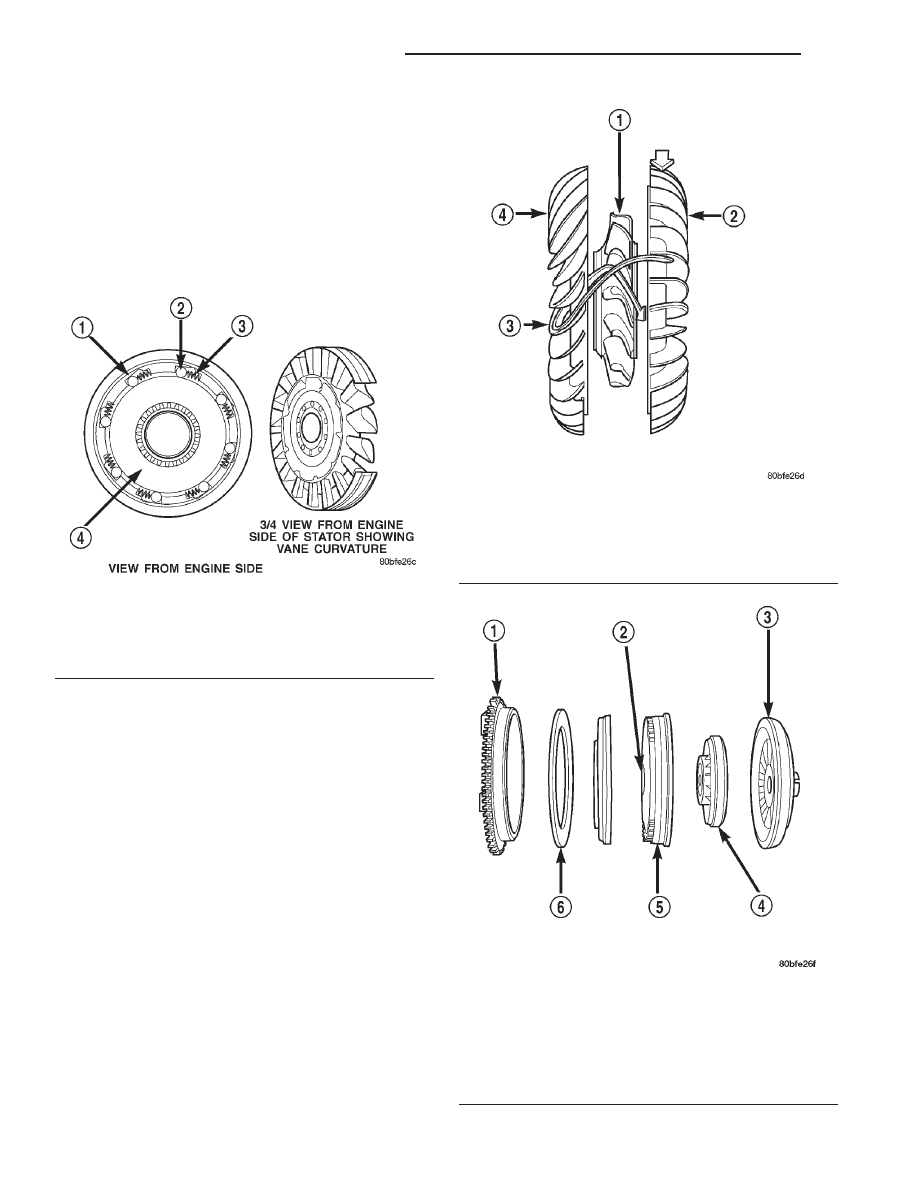Jeep Grand Cherokee WJ. Manual - part 451

STATOR
The stator assembly (Fig. 5) is mounted on a sta-
tionary shaft which is an integral part of the oil
pump. The stator is located between the impeller and
turbine within the torque converter case (Fig. 6). The
stator contains an over-running clutch, which allows
the stator to rotate only in a clockwise direction.
When the stator is locked against the over-running
clutch, the torque multiplication feature of the torque
converter is operational.
TORQUE CONVERTER CLUTCH (TCC)
The TCC (Fig. 7) was installed to improve the effi-
ciency of the torque converter that is lost to the slip-
page of the fluid coupling. Although the fluid
coupling provides smooth, shock–free power transfer,
it is natural for all fluid couplings to slip. If the
impeller
and
turbine
were
mechanically
locked
together, a zero slippage condition could be obtained.
A hydraulic piston was added to the turbine, and a
friction material was added to the inside of the front
cover to provide this mechanical lock-up.
OPERATION
The converter impeller (Fig. 8) (driving member),
which is integral to the converter housing and bolted
to the engine drive plate, rotates at engine speed.
The converter turbine (driven member), which reacts
from fluid pressure generated by the impeller, rotates
and turns the transmission input shaft.
TURBINE
As the fluid that was put into motion by the impel-
ler blades strikes the blades of the turbine, some of
Fig. 5 Stator Components
1 – CAM (OUTER RACE)
2 – ROLLER
3 – SPRING
4 – INNER RACE
Fig. 6 Stator Location
1 – STATOR
2 – IMPELLER
3 – FLUID FLOW
4 – TURBINE
Fig. 7 Torque Converter Clutch (TCC)
1 – IMPELLER FRONT COVER
2 – THRUST WASHER ASSEMBLY
3 – IMPELLER
4 – STATOR
5 – TURBINE
6 – FRICTION DISC
21 - 186
45RFE AUTOMATIC TRANSMISSION
WJ
DESCRIPTION AND OPERATION (Continued)